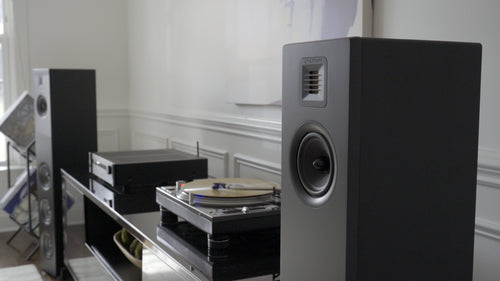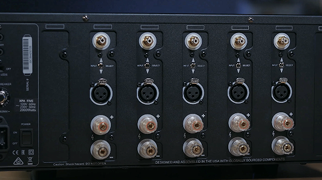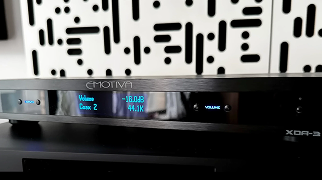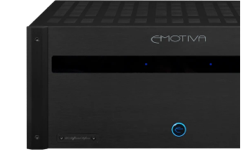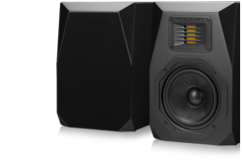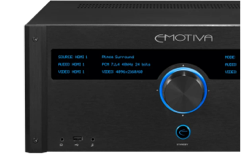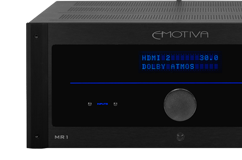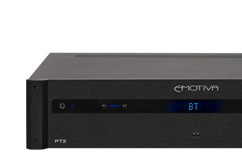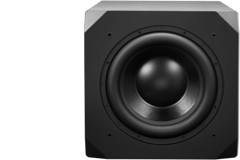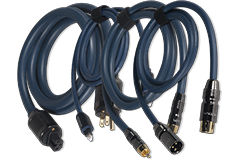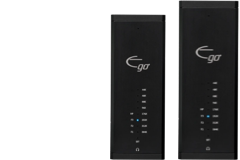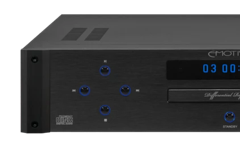Bookshelf vs. Tower Speakers: What’s the Difference?
Many speakers used in stereo or home theater setups often fall into two large categories. Bookshelf speakers and tower speakers derive their names from their typical size and positioning in a listening space. Which style of speaker best suits your particular needs is a consideration with many potential factors, from budget, size, to the positioning of your system. The ultimate factor in making this decision depends on what style of speaker will sound the best in your space with your particular goals.
What is a Bookshelf Speaker?
A speaker is typically categorized as a Bookshelf Speaker based on its size, or that it often will need to be placed on a stand or other elevated surface during use, such as a bookshelf, to bring it to the appropriate height for listening. Bookshelf Speakers do not have to be placed on a bookshelf, but this is simply an industry term that denotes a category of speaker that does not sit on the floor. These are often two-way designs, utilizing a woofer and tweeter in a smaller cabinet. However, larger speakers with three or more drivers exist that could still be categorized as Bookshelf Speakers.
What is a Tower Speaker?
A Tower Speaker is sometimes referred to as a floor-standing speaker, as they are meant to be placed directly on the floor during use. Modern Tower Speakers are tall and slim, with cabinet sizes a few times larger than a Bookshelf Speaker and tweeters near ear level. They often include multiple woofers and porting, allowing more significant low-frequency extension and impact. Tower-style speakers often incorporate 3-way crossover designs with a dedicated midrange circuit. This allows each loudspeaker in the tower to operate on a more select frequency range. Tower Speakers will require more consideration with speaker placement, as they require floor space when in use, but they can also be a prominent and attractive feature in your listening space.

Budgeting
Overall, you will have to determine how to spread and divide your budget across the number of speakers needed for your application. Prioritizing the main, front-stage speakers is often the best place to start, making sure you have the main stereo pair and center channel, if applicable, to form a solid foundation to build upon. When completing your system, the choices you make for your main speakers may also help determine what you need as far as subwoofer reinforcement.
In general, one might think that tower speakers, being larger and utilizing more drivers, would be more expensive than bookshelf speakers, and that is often the case when you look at the options within a single brand or line of speakers. However, a bookshelf speaker produced with higher-quality drivers and cabinets will often be more expensive than a lesser-quality tower speaker that may be larger and utilize more drivers. The quality and not just the quantity of parts used in a speaker will determine the overall performance of any speaker. But keep in mind that the price of a speaker alone should not determine how much you enjoy its sound.
Space and Size Matter
Bookshelf speakers and tower speakers typically significantly differ in both footprint and volume. Bookshelf speakers can be much more discrete in any given space but could also take up the same footprint as a pair of tower speakers if placed prominently in the room on speaker stands. Tower speakers have less placement versatility in a room, but the tradeoff is typically a larger and deeper sound. Bookshelf speakers may be enough to fill a small room but could have trouble keeping up with a large listening room. Conversely, tower speakers will be better suited to a larger space but offer a great sound in smaller rooms.

Sound Differences
Because of the smaller cabinet and woofer size of a Bookshelf Speaker, the low-frequency response may be somewhat limited in a Bookshelf Speaker, and they are often paired with subwoofers to fill in the low end. However, a Bookshelf Speaker's smaller baffle and fewer drivers can produce a more focused and detailed image. The larger cabinets and greater number of drivers in a Tower Speaker can produce a broader range of frequencies than a smaller speaker. Still, the addition of more drivers can muddy the sound and detract from imaging if not well implemented.
Which Speaker is Best for Your Lifestyle
When selecting a speaker for your application, there are excellent examples of both Bookshelf and Tower speakers to fit your listening and space requirements. A tower speaker will require more space in general and may be more of a focal point of your room. Bookshelf speakers may be easier to blend into a room where the speakers will not be one of the main features of the space. But in the end, after considering the requirements and benefits of each type of speaker, the important thing is that you choose a speaker that you enjoy listening to.
Share Post


